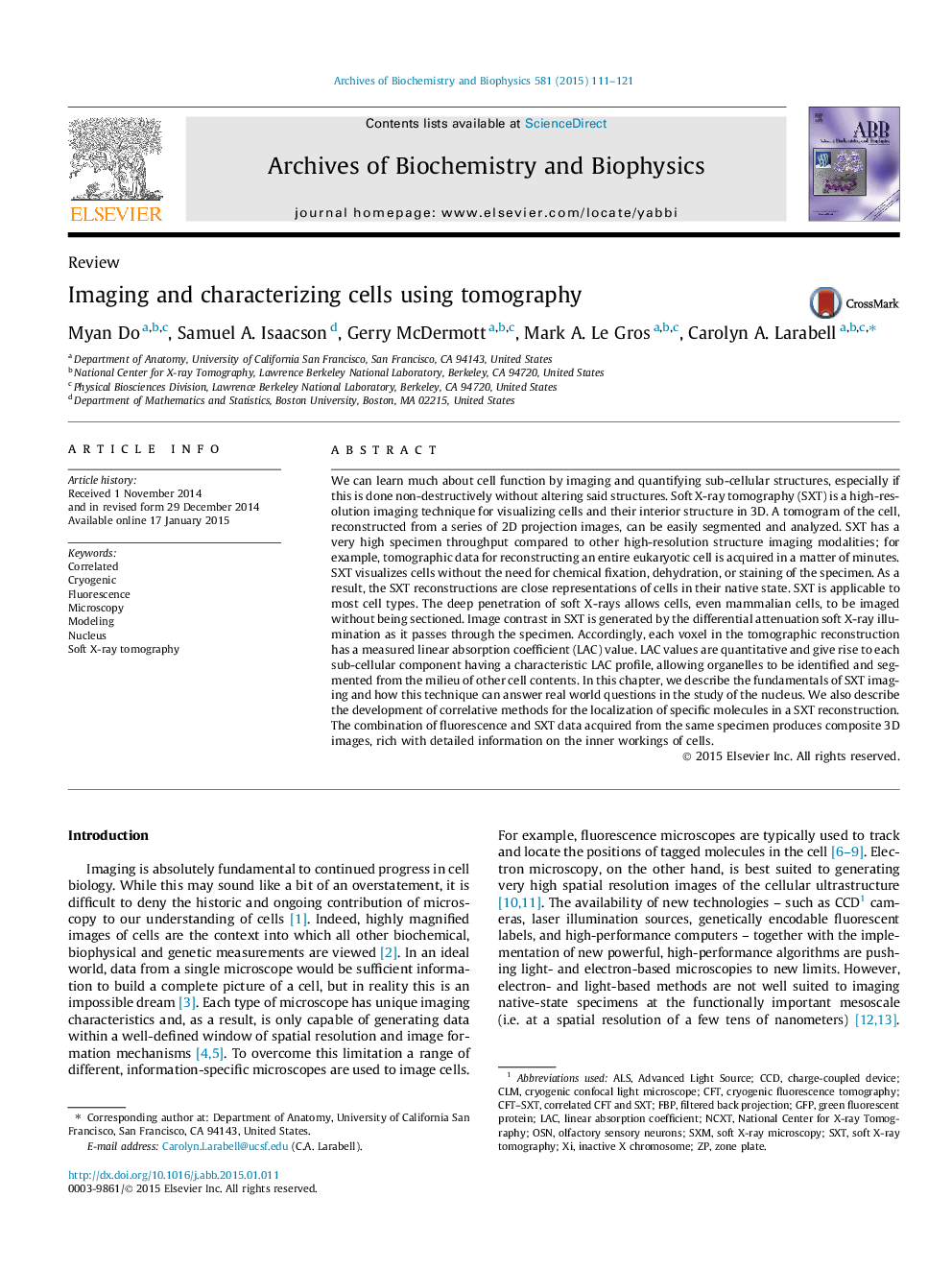| کد مقاله | کد نشریه | سال انتشار | مقاله انگلیسی | نسخه تمام متن |
|---|---|---|---|---|
| 1924895 | 1536322 | 2015 | 11 صفحه PDF | دانلود رایگان |
• Soft X-ray tomography (SXT) visualizes cell structures in 3D, at high resolution.
• Cells imaged by ‘water window’ soft X-rays are intact, hydrated and unstained.
• Soft X-ray attenuation by the cell is quantified by linear absorption coefficients.
• SXT data can be correlated with data from confocal cryo-fluorescence tomography.
• SXT reconstructions of cells are used to model molecular mobility in the nucleus.
We can learn much about cell function by imaging and quantifying sub-cellular structures, especially if this is done non-destructively without altering said structures. Soft X-ray tomography (SXT) is a high-resolution imaging technique for visualizing cells and their interior structure in 3D. A tomogram of the cell, reconstructed from a series of 2D projection images, can be easily segmented and analyzed. SXT has a very high specimen throughput compared to other high-resolution structure imaging modalities; for example, tomographic data for reconstructing an entire eukaryotic cell is acquired in a matter of minutes. SXT visualizes cells without the need for chemical fixation, dehydration, or staining of the specimen. As a result, the SXT reconstructions are close representations of cells in their native state. SXT is applicable to most cell types. The deep penetration of soft X-rays allows cells, even mammalian cells, to be imaged without being sectioned. Image contrast in SXT is generated by the differential attenuation soft X-ray illumination as it passes through the specimen. Accordingly, each voxel in the tomographic reconstruction has a measured linear absorption coefficient (LAC) value. LAC values are quantitative and give rise to each sub-cellular component having a characteristic LAC profile, allowing organelles to be identified and segmented from the milieu of other cell contents. In this chapter, we describe the fundamentals of SXT imaging and how this technique can answer real world questions in the study of the nucleus. We also describe the development of correlative methods for the localization of specific molecules in a SXT reconstruction. The combination of fluorescence and SXT data acquired from the same specimen produces composite 3D images, rich with detailed information on the inner workings of cells.
Figure optionsDownload high-quality image (189 K)Download as PowerPoint slide
Journal: Archives of Biochemistry and Biophysics - Volume 581, 1 September 2015, Pages 111–121
